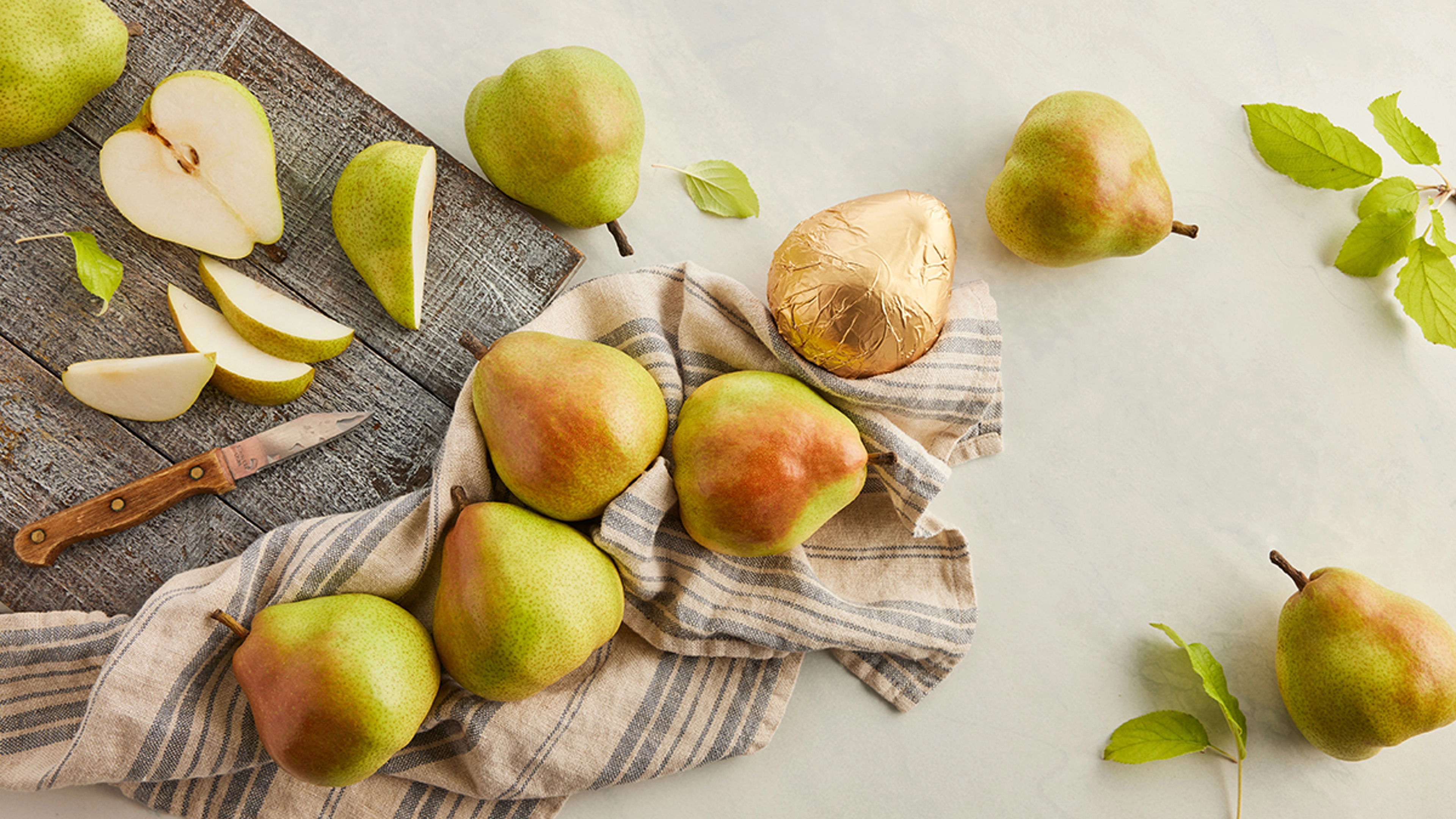How to Ripen an Avocado and Other Avocado Questions
There's more to it than just playing the waiting game.
Jun 15, 2022
Avocados add a unique creamy texture, buttery flavor, and eye-catching hue to meals and snacks — but there is an art to working with them. Cut into one too early and you'll find a less-than-optimal flavor; try to halve an avocado like an orange or apple, and things can get messy fast.
However, with health benefits that include being an excellent source of vitamin C, magnesium, and fiber, packing in more potassium than a banana, and potentially helping reduce LDL cholesterol levels and the risk of cardiovascular disease, avocados are worth the extra effort.
They're also versatile, able to be incorporated into dishes ranging from savory sides to sweet baked goods, according to Rachael Laenen, vice chair of the California Avocado Commission.
“I mix an avocado into my tuna or potato salad instead of mayonnaise," Laenen says. “I also swap out butter for avocados to create a really rich and moist cake."

Substituting them in recipes may be simple, but successfully serving and storing them can require a bit of avocado expertise.
If you're not sure exactly how to best slice, dice, and generally enjoy the heart-healthy vibrant green fruit (yes, it's a fruit, not a vegetable), we've got answers to all your avocado questions, including how to ripen an avocado and how to slice one.
Where are avocados grown — and what kinds are available?
Mexico by far provides the most avocados. In 2020, the country exported 1.3 million tons — more than three times that of the second largest provider, Peru. Chile and Kenya, respectively, round out the top four in terms of the world's top avocado exporters.
The United States grew $426 million worth of avocados — more than 206,000 tons — in 2020. Most of the country's avocado production occurs in California. Numerous varieties of avocados, including Carmen, Sir Prize, Reed, Zutano, and Pinkerton, are grown in the Golden State, from San Diego to Monterey Bay, according to Laenen, who says the climate is a good fit for the fruit.
“Avocados are a sub-tropical tree, so they are particular when it comes to temperature and humidity," she says. “They like it warm but not too hot, and certainly don't like the cold."
The Hass avocado, one of the most well-known varieties, also grows in California. “It has a great texture and flavor, and is hardy," Laenen says. “It ships well, ripens well, and rarely suffers from other defects like seed or stem rot."
When are avocados in season?
Years ago, finding avocados year round was more challenging. Today, however, they're readily available in stores during most months.
According to Bon Appétit, while California's growing season extends from about February to September, the United States Department of Agriculture began allowing a limited number of avocados from Mexico, where they're grown year round, to be imported during the winter in the late 1990s. Today, Mexico and other countries — mainly Chile and Peru — supply avocados to the U.S. throughout the year, supplementing what's grown stateside.
How do you ripen an avocado?
A ripe avocado offers a soft, smooth texture, but if you cut into one prematurely, you'll find it has a stiff, tougher consistency. As a result, being able to pinpoint when an avocado is at its ripest is key.
Color is often a sign. For example, a Hass avocado, Laenen says, will darken from green to black as it ripens. Looks, though, can be deceiving. Checking to see if the avocado yields slightly to pressure in the palm of your hand is also a good idea.
If waiting for the ripening process to occur is taking too long, you can speed things up with some help from ethylene, a natural plant hormone found in some fruits that activates ripening — particularly when it's emitted in an enclosed environment.
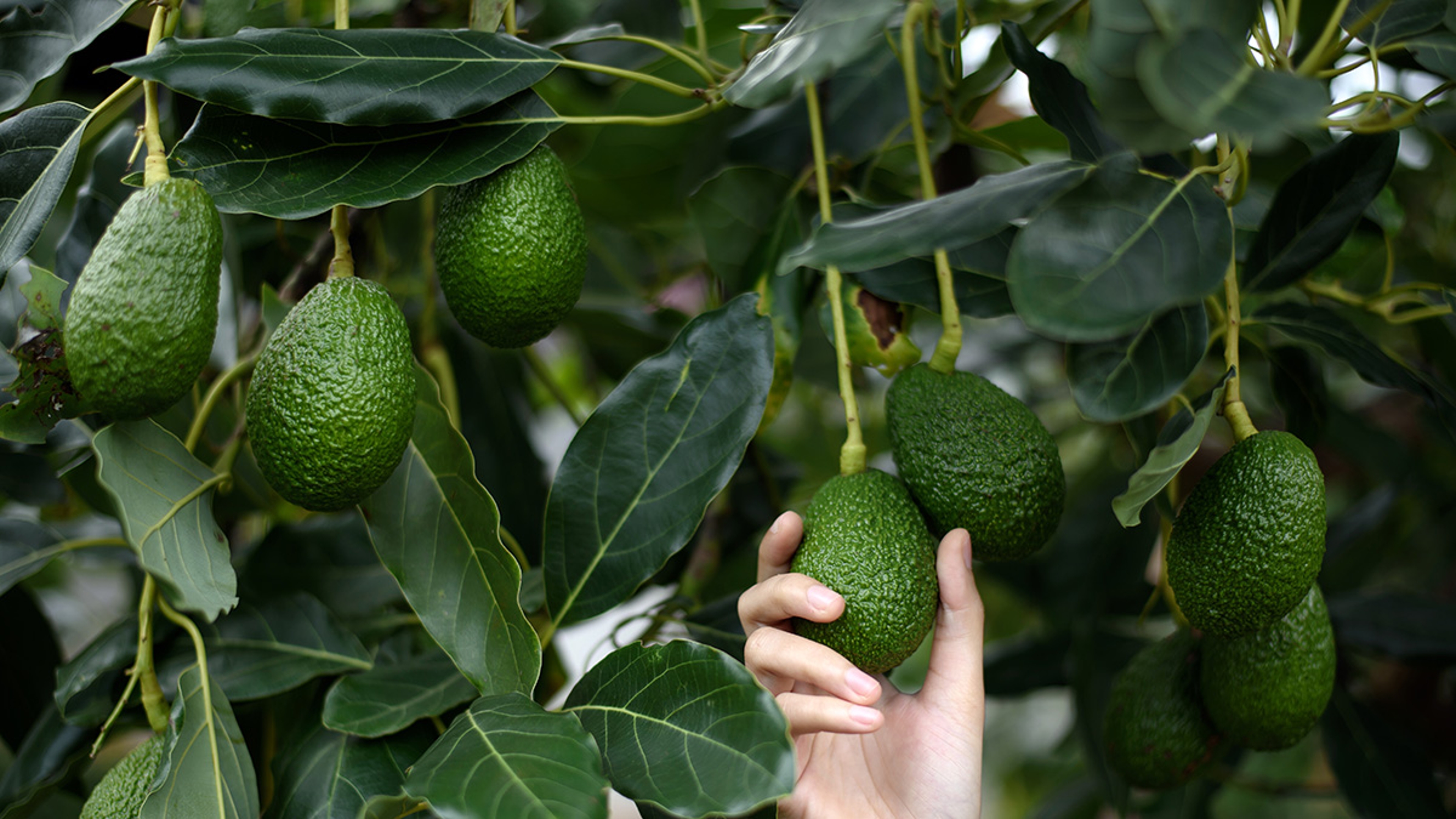
“You can place an avocado in a brown paper bag with a banana, kiwi, or apple," Laenen says. “Once the avocado has ripened, you can hold it in the fridge for several days."
If you slice an avocado too soon, you may be able to salvage it by rubbing lime or lemon on its flesh, placing the halves back together, wrapping it in plastic, and placing it in the refrigerator until it's ripe.
How should you cut an avocado?
Laenen suggests holding a knife horizontally to your cutting board, carving into the seed and rotating the avocado.
“Twist the two halves to separate, and then cut the fruit into quarters," she says. “The seed will easily fall out, and then peel the skin back."
If a recipe calls for diced avocado, try cutting the quartered or halved avocado into cubes while it's still in its skin.
“You can score the flesh before you peel it," Laenen says. “Or scoop it out with a spoon for guacamole [after it's been cubed]."
How do you prevent avocados from browning?
Avocados oxidize when exposed to air, so once they're cut, they'll brown fairly quickly.
There are a few things you can do to help prevent your avocados from turning brown. According to the California Avocado Commission, squeezing lemon juice on an avocado's exposed areas can help. Citrus juice is a natural preservative and contains ascorbic acid, which will react with oxygen first. Storing the avocado cut-side down offers further protection.
The same is true with guacamole. While you may have heard that leaving the avocado seed in guacamole will help prevent it from turning brown, you still need to keep oxygen away from its surface.
“If you've made a big batch of guacamole and you're taking it to a party, cover it with cling film," Laenen explains. "Press the film down all the way onto the guac, pressing out all the air, and that should help."
One method you should not do is submerging your avocado in water and then placing it in the refrigerator. FDA research found listeria monocytogenes present on the skin can multiply in water and spread to an avocado's interior, even if you wipe it down first.
Avocado recipes
Avocado toast may have gotten its fair share of attention in recent years, but there are so many other dishes you can enjoy avocado.
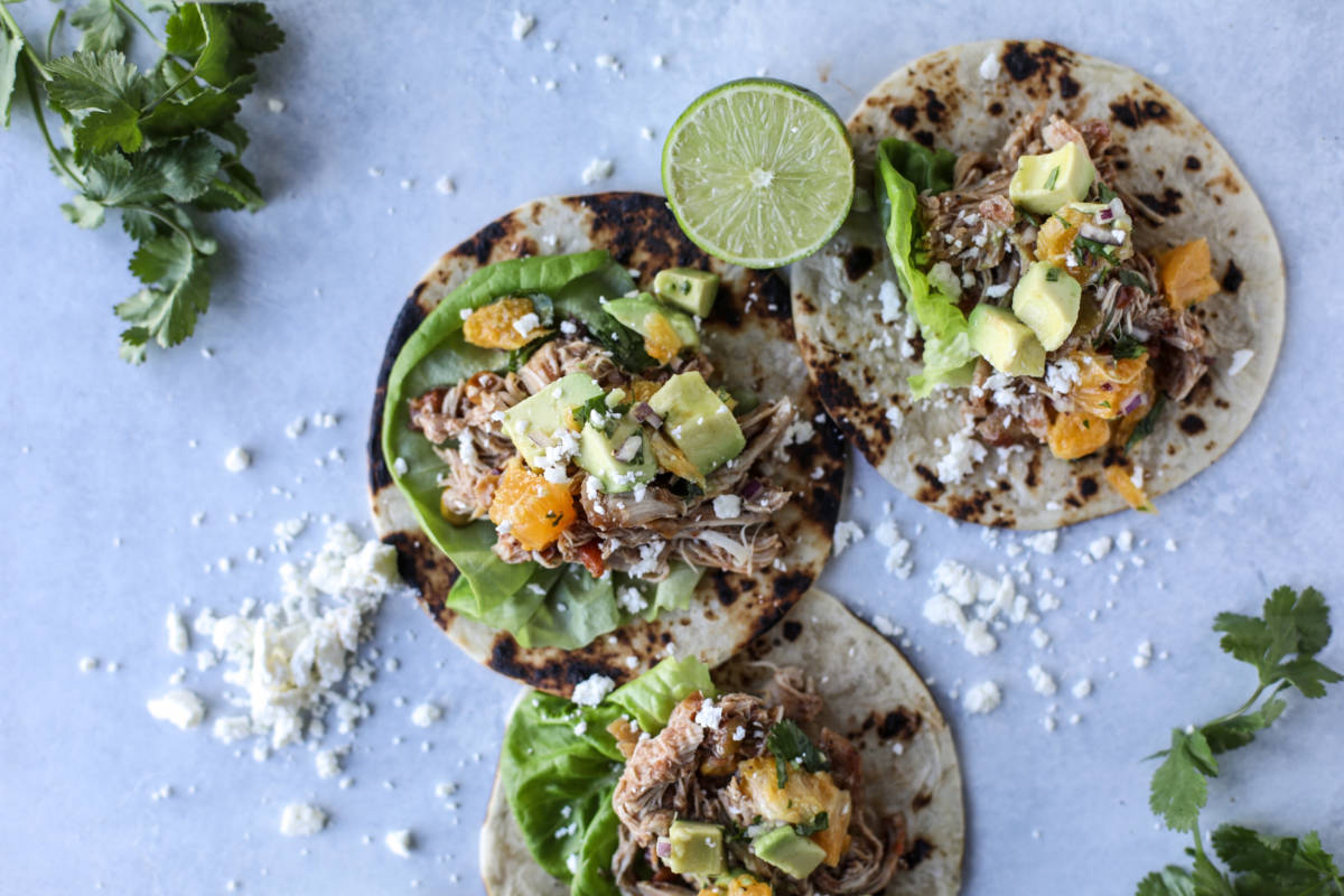
- Slow cooker
- 1 pound boneless skinless chicken thighs
- 14 teaspoon salt
- 14 teaspoon pepper
- 12 cup Harry & David® salsa
- 12 yellow or white corn tortillas (for serving)
- Queso fresco cheese (crumbled, for serving)
- 1 cup cherry tomatoes (halved)
- 1 Harry & David® HoneyBell Orange (or another sweet citrus, segmented and chopped)
- 1 avocado (chopped)
- 3 tablespoons red onion (diced)
- 2 tablespoons fresh cilantro (chopped)
- Pinch salt
- Pinch pepper
- Lime juice (freshly squeezed)

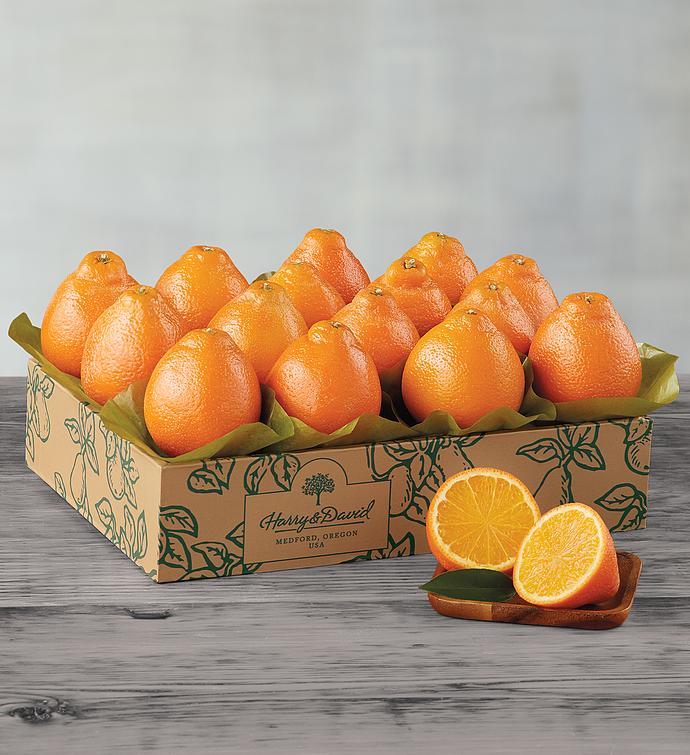
- Place the chicken in your slow cooker and season it with salt and pepper.
- Pour the salsa on top. Cover the slow cooker and cook on high for 3 to 4 hours or on low for 6 to 8 hours. Whichever setting, cook until the chicken easily shreds with a fork.
- For the citrus salsa, combine everything together in a bowl and mix. Let it sit at room temperature for 15 minutes before serving.
- To assemble the tacos, warm the tortillas (in the oven or microwave, whichever you prefer) and fill them with a few tablespoons of the chicken.
- Top with the citrus salsa and queso fresco cheese. Serve immediately.

- Nonstick cooking spray (for grilling)
- 12 Vital Choice Grass-Fed Beef Burger Patties (thawed)
- 1 pound Harry & David Bacon
- 1 pound cheese (e.g. Colby jack, pepper jack, fresh mozzarella, etc. thinly sliced)
- 12 brioche buns
- Lettuce
- Red onion (thinly sliced)
- Heirloom tomatoes (sliced)
- Pickles (sliced into 1/4-inch chips)
- Mashed avocado or guacamole
- Fresh cilantro
- Fresh basil
- Ketchup
- Mustard
- Harry & David Pepper & Onion Relish
- Harry & David Honey Mustard
- Harry & David Fire Roasted Peach Pepper Jelly
- Harry & David Classic Bruschetta
- Harry & David Charred Pineapple Relish
- Preheat the grill to medium-high, about 400° F.
- Place a heat-safe cast-iron skillet directly on the grill grates. Add the bacon to the skillet. Cook 4-5 minutes per side until the bacon is rendered and as crisp as you'd like. Carefully transfer to a paper towel-lined plate to drain any excess oil. Set aside.
- Once the bacon is about halfway cooked, begin grilling the burgers. Just before placing the patties on the grill, generously spray a wad of paper towels with nonstick cooking spray.
- Once the bacon is about halfway cooked, begin grilling the burgers. Just before placing the patties on the grill, generously spray a wad of paper towels with nonstick cooking spray. Use grilling tongs to run the paper towel over the grill grates, generously oiling the grill grates.
- Place the burgers on the grill. Close the lid and grill for 3 minutes per side for medium doneness. If you'd like to add cheese to your burgers, do so when there are 2 minutes left of grilling time.
- Halve the burger buns. Lightly spritz the cut side with nonstick cooking spray. Place the buns directly on the grill grates, grilling for 90 seconds to 2 minutes, just until toasty. Keep a close eye on them to prevent burning – they toast very quickly!
- Place the grilled burgers, cooked bacon, and toasted buns on individual platters. Set up your burger bar by placing the platters on a table or serving station, along with your toppings and condiments of choice.
If you'd like to prep the bacon in advance, you can cook it on the stovetop or in the oven. My go-to is the oven. Arrange the bacon on a parchment-lined baking sheet. Bake at 375° F for 10-12 minutes, until rendered and as crisp as you'd like. Remove from the oven and transfer to a paper towel-lined plate to drain any excess oil. Once cool enough to handle, transfer to an airtight container and store in the refrigerator for up to 3 days.
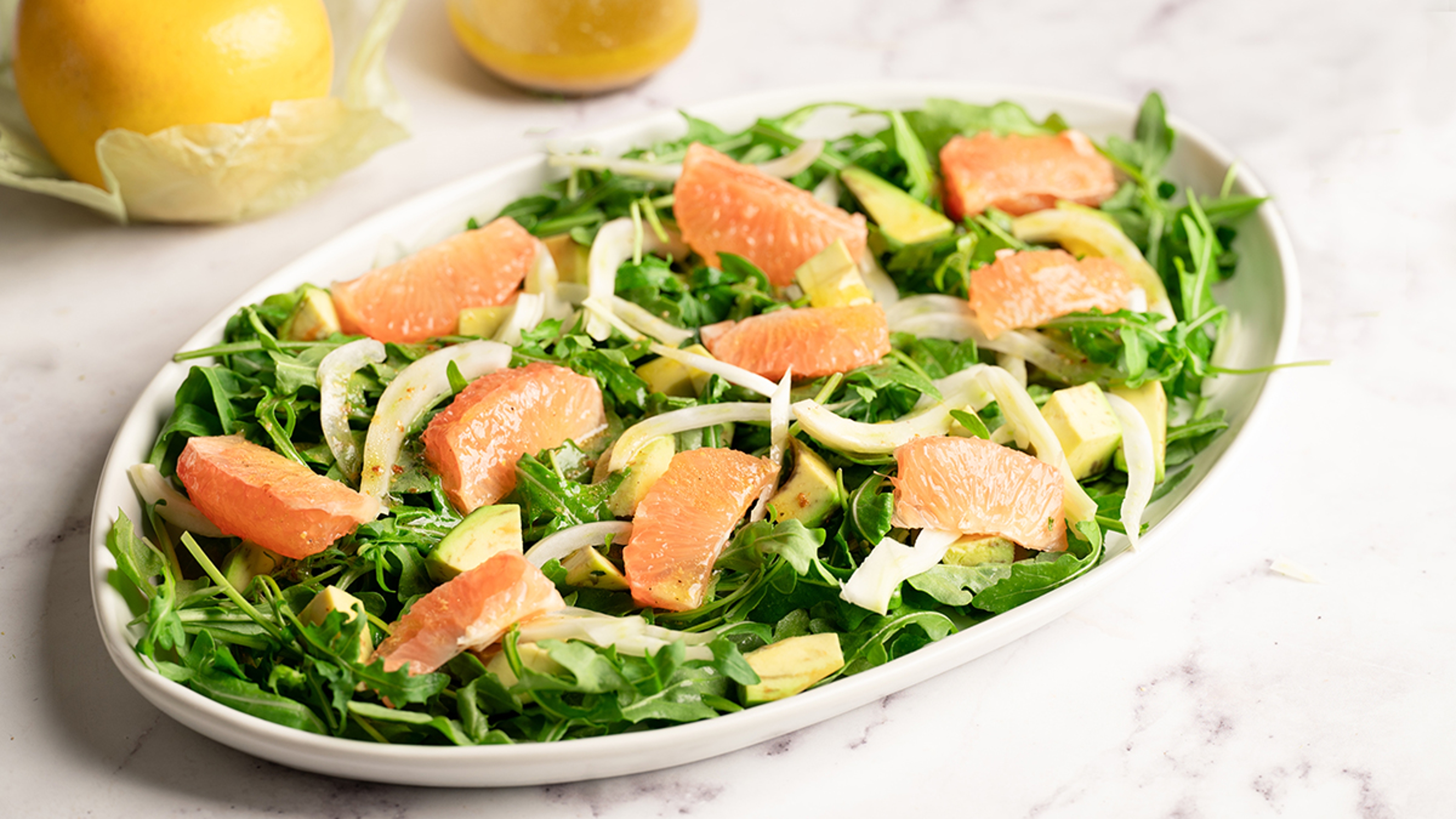
- 14 cup fresh lemon juice
- 2 teaspoons Dijon mustard
- 12 teaspoon sea salt
- 1 teaspoon ground pepper
- 12 cup extra-virgin olive oil
- 8 ounces baby arugula (or lettuce of choice)
- 1 large avocado (peeled and sliced)
- 1 grapefruit (peeled and sectioned with membranes removed)
- 1 fennel bulb (thinly shaved)

- Whisk together the lemon juice, mustard, salt, and pepper.
- Gradually whisk in the olive oil until combined and set aside.
- Gently tear the greens into bite sized pieces and arrange on four chilled plates.
- Alternate slices of avocado and grapefruit sections on the greens.
- Top with the shaved fennel and drizzle the dressing generously over the salad. Serve and enjoy.
.svg?q=70&width=384&auto=webp)





